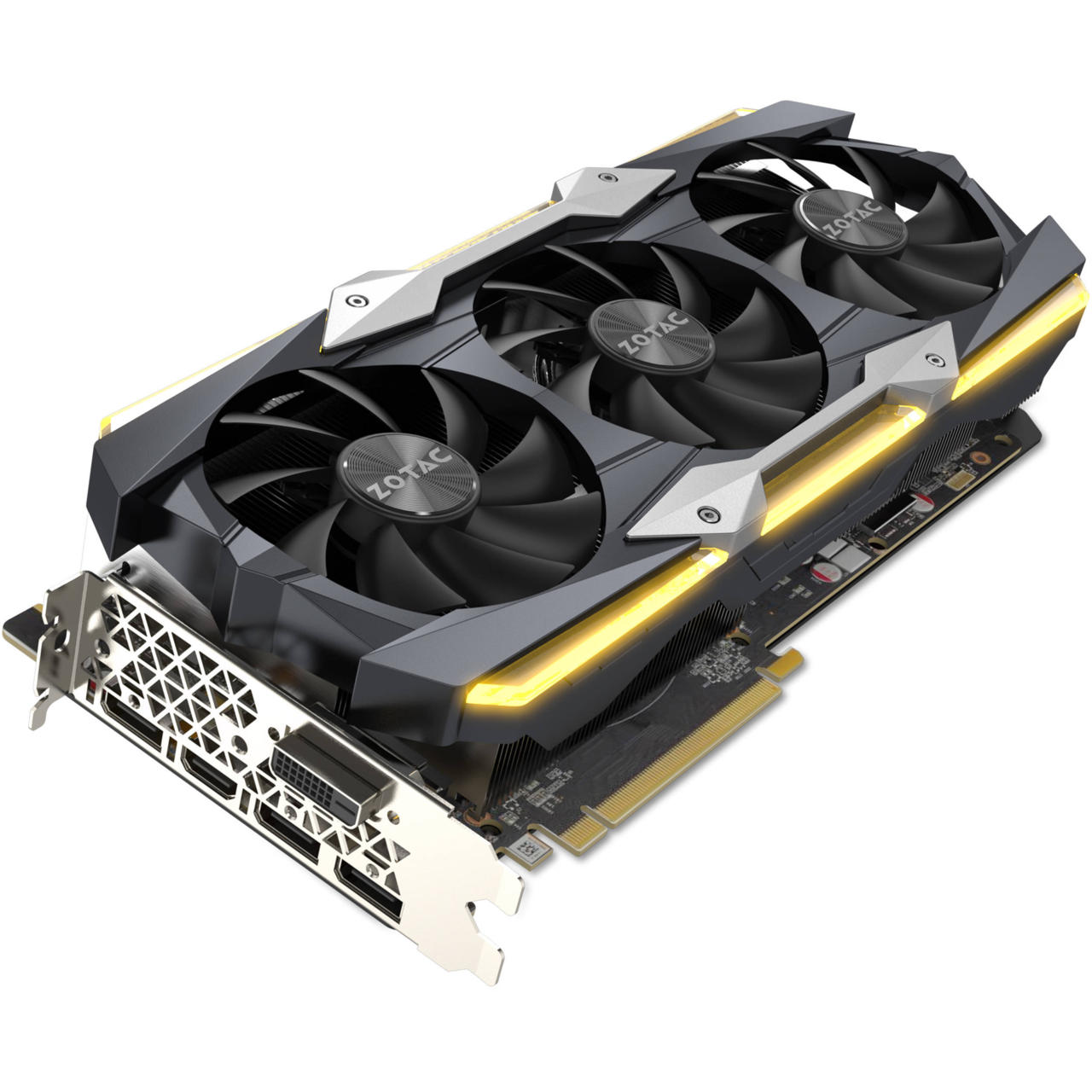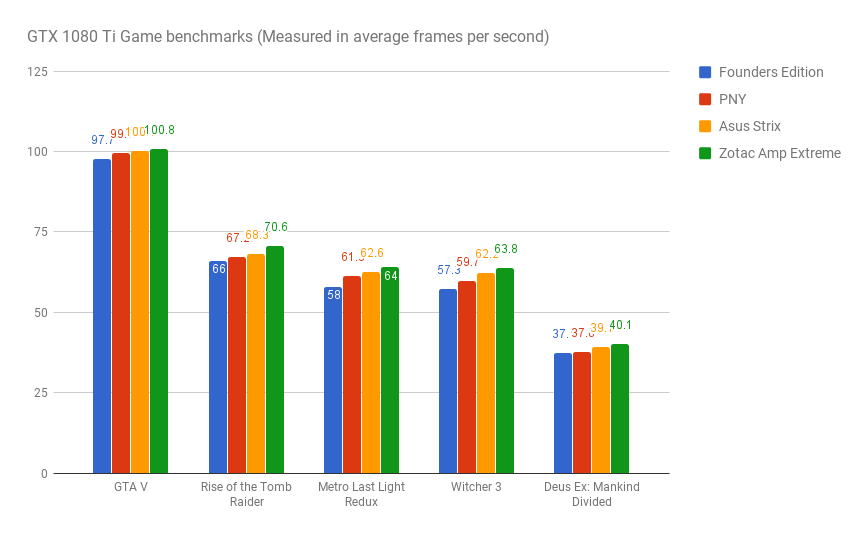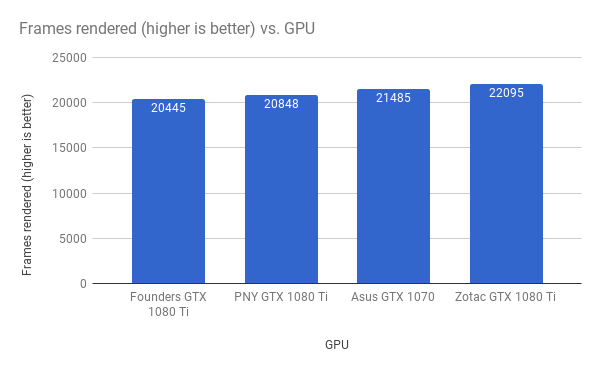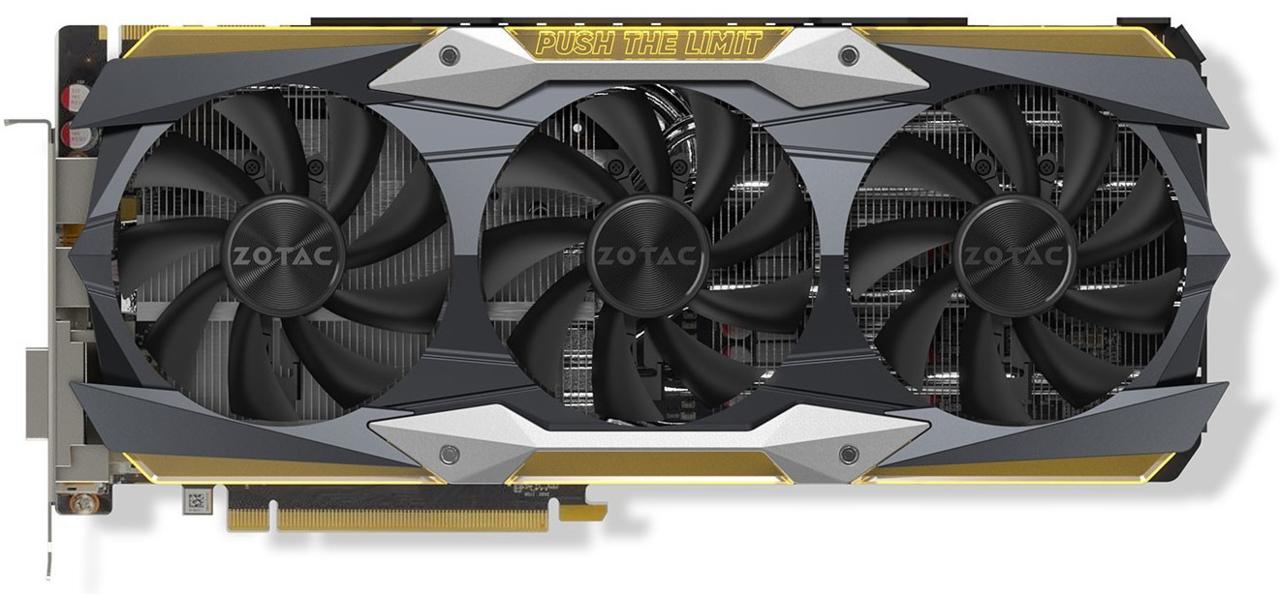Zotac GeForce GTX 1080 Ti Amp Extreme Review
Zotac’s GeForce GTX 1080 Ti Amp Extreme Benchmarked
Zotac’s Amp Extreme is the biggest GeForce GTX 1080 Ti card we’ve tested with dimensions that measure 12.8 x 5.83 x 2.23 inches. This makes it a 2.5 slot card, so you’ll definitely want to make sure that you have enough clearance in your rig before you purchase it.

Zotac’s Amp Extreme card comes equipped with three 90mm fans. What makes them unique is that they won’t actually spin until the GPU hits around 60 degrees Celsius.
Zotac’s card offers the most aggressive out-of-the-box frequency that we’ve seen from an aftermarket GTX 1080 Ti with a boost clock that tops out at 1759MHz. This makes it 177MHz faster than Nvidia’s reference GTX 1080 Ti. The Amp Extreme also features an aggressive VRAM overclock with its 11.2Gbps rate.
In terms of aesthetics, the card comes in a “gunmetal” gray. It’s got some sharp-looking edges, but looks pretty clean overall. Zotac’s card offers RGB lighting. With its Spectra software, you can tweak three lighting zones on the board to cycle colors, breathe, and more.
Unlike Nvidia’s reference board, which requires a 6-pin and an 8-pin power connector, Zotac’s card requires two 8-pin power connectors. In terms of ports, it offers 3x DisplayPort 1.4 and 1x HDMI 2.0b. The card retails for $770, which makes it approximately $70 more than Nvidia’s reference SKU.
| Nvidia GeForce GTX 1080 Ti | Zotac GeForce GTX 1080 Ti | |
| CUDA Cores/Stream Processors | 3584 | 3584 |
| Texture Units | 224 | 224 |
| ROPs | 88 | 88 |
| Core Clock | 1480MHz | 1645MHz |
| Boost Clock | 1582MHz | 1759MHz |
| Memory Clock | 11Gbps GDDR5X | 11.2Gbps GDDR5X |
| Memory Bus Width | 352-bit | 352-bit |
| VRAM | 11GB | 11GB |
| Transistor Count | 12B | 12B |
| TDP | 250W | 320W |
| Power Connectors | 1x6 pin, 1x8 pin | 2x 8 pin |
| Manufacturing Process | 16nm FinFET | 16nm FinFET |
| Architecture | Pascal | Pascal |
| GPU | GP102 | GP102 |
| Dimensions | 10.5x4.37x2 inches | 12.8x5.83x2.23in |
| Ports | 3x DisplayPort 1.4, 1x HDMI 2.0b | 1x Dual-link DVI-D, 3x DisplayPort 1.4, HDMI 2.0 |
| Retail Price | $699 | $770 |
Testing Methodology
We tested several GTX 1080 Ti GPUs against Zotac’s board using their out-of-the-box speeds on five graphically-taxing games. We maxed out the graphical settings on all the games with the exception of anti-aliasing, which is a very graphically demanding effect that doesn’t make much sense at 4K.
We tested all of the GPUs on the same system, which is a custom rig equipped with an Intel Core-i7 6700K CPU, 16GB of Corsair Vengeance DDR4 RAM clocked at 2133MHz, and a Gigabyte GA-170X-Gaming 7 motherboard housed in NZXT’s H440 case. Full test bench details are located below.
CPU | Intel Core-i7 6700K |
RAM | 16GB Corsair Vengeance 2133MHz |
Motherboard | Gigabyte GA-170X-Gaming 7 |
Storage | Seagate 600 Series 240GB |
Cooler | NZXT Kraken X61 |
Case | NZXT H440 |
OS | Windows 10 |
PSU | NZXT 1200W |
4K Benchmarks

As you can see from the benchmark chart above, Nvidia’s reference card is the slowest solution of the bunch. Zotac’s solution is the fastest card across the board followed by the Asus Strix and then by PNY’s XLR8 card.
In our GTA V benchmark, only the Asus and Zotac cards were able to cross the 100 average FPS threshold. They were also the only two models that allowed our rig to hit over 60 average FPS in the Witcher 3.
The Zotac Amp Extreme was the only model to surpass the 70 average FPS threshold in Rise of the Tomb Raider, and get above 40 average FPS in Deus Ex: Mankind Divided. While all of the cards are able to average over 30 FPS in Eidos Montréal’s stealth action game, all of them featured minimum framerates that dipped into the 20s. This means you’ll probably want to turn down some graphical settings to bring up the frame rate.
VR Benchmark

While the Oculus Rift and HTC Vive both use resolutions that amount to 2160x1200, both VR headsets allow you to easily enable supersampling options that push the rendering targets to 4K-like levels.
Running Valve’s SteamVR Performance Test, all of the cards here earned a “very high” score of “11,” which is the highest score. The test does provide more granular data that takes into account the amount of frames that are rendered within the benchmark, however. The more frames a GPU is able to render, the better. Again, here the pecking order remains the same. According to our results, Zotac’s GeForce GTX 1080 Ti is the best VR graphics card out of the bunch.
Conclusion
Zotac’s GeForce GTX 1080 Ti Amp Extreme is the fastest GeForce GTX 1080 Ti we’ve ever tested, which makes it the fastest graphics card we’ve ever reviewed. While it is certainly a 4K-capable card, you’ll still most likely want to lower some graphical settings if you want to reach a consistent 60 FPS in the more graphically demanding games.

If you’re in the market for a great-bang-for-the-buck 4K solution, we recommend Nvidia’s Founders Edition graphics card. If you’re looking for the most badass gaming GPU in town, we recommend Zotac’s Amp Extreme solution. Just make sure it fits into your case.
Click here to check out the other GeForce GTX 1080 Ti cards we reviewed.
Got a news tip or want to contact us directly? Email news@gamespot.com
Join the conversation